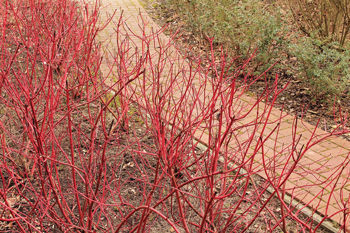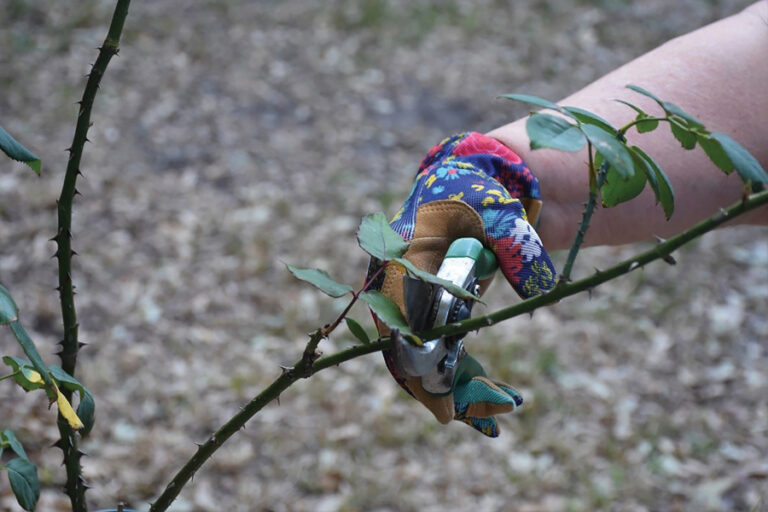Getting to know your plants
If there’s just one thing you can do for your garden plants, it’s to get to know them. If you’re not sure what you’ve got, concentrate on identifying which plants are in your plot so that you can research the requirements of each. November might not be most people’s favourite gardening month, but it is a perfect time for swotting up on your plants’ needs and for tasks such as pruning. So what might need pruning and why?
Leave these alone
Firstly, it’s important to appreciate that not every plant needs or likes to be pruned.
• Stone fruit trees, such as cherries and plums, are at risk of picking up a fungal disease called silver leaf if they are pruned when dormant. Avoid pruning all Prunus species when dormant, even if they are the ornamental kind rather than fruit-bearing.
 • Some plants are grown for their winter stem colour, including dogwood (Cornus) and some forms of willow (Salix). Don’t prune these in November, because you won’t enjoy the benefit of their main attraction. Their bright stems are some of the most rewarding sights throughout winter gloom and they can be left right until early spring.
• Some plants are grown for their winter stem colour, including dogwood (Cornus) and some forms of willow (Salix). Don’t prune these in November, because you won’t enjoy the benefit of their main attraction. Their bright stems are some of the most rewarding sights throughout winter gloom and they can be left right until early spring.
• Stay away from shrubs that flower early in spring, including lilacs, magnolias and rhododendrons. You will be cutting off their flowering branches.
• Evergreen trees are best left alone during winter so that their leaves can form a type of protection against cold and wind. Some evergreen conifers will never regrow if you cut back into old wood, so it’s vital to know which plant you are dealing with before taking any drastic action.
Get to work on these
Apple and pear trees need you during winter. Any time from November through to March is ideal when the trees are dormant. Aim firstly to deal with the ‘three Ds’: dead, diseased and damaged branches. Pruning stimulates growth and helps to encourage a good crop of fruit while allowing light and air circulation into the tree, both of which are important for good health. Pruning also enables a shape to be maintained so that the tree doesn’t outgrow the allocated space. This is equally important for bush forms as it is for trained fruit trees, such as cordons, fans and espaliers.
Soft fruit bushes, such as blackcurrants, redcurrants and blueberries, can all be trimmed during winter. You should aim to achieve a goblet form, removing old wood and enabling good air circulation. Leave young, healthy branches to create the best chance of a good crop. Autumn-fruiting raspberries should be cut down to the ground so their new stems can bear fruit next year.
Wisteria needs pruning twice per year, once in winter and again in summer, and the winter prune is essential if you want to promote flowering. Cut all wisteria side shoots right back to just three or four buds on the framework of the shape you desire. Next summer you will need to remove most of the whippy growth, which can easily measure a metre long.
Bush roses also benefit from being cut back in November as it reduces the likelihood of ‘wind rock’, which can destabilise the roots of the plant. These are generally hardy plants that can be tidied in November, then, before they start growing in the spring, cut back hard to around 40cm tall, depending on the original size and type. Winter pruning is ideal for hybrid tea roses, floribundas and climbers that produce flowers on the new growth, but be gentle with modern shrub roses and ramblers because they prefer to bloom on older wood.
Many deciduous trees and shrubs can also be pruned during the dormant season. It’s an ideal time to take out damaged and diseased branches, shape the form, and renovate them to encourage fresh new growth.
Getting to know your plants can be a great pleasure. Try not to treat everything in the same way and avoid what might be termed the ‘supermarket car park trim’ where everything is rounded into a mound. You’ll gain the best results by allowing each plant to form a naturally beautiful shape and by using techniques to thin it out so that the stems and branches don’t crowd each other.
By Caroline Knight


